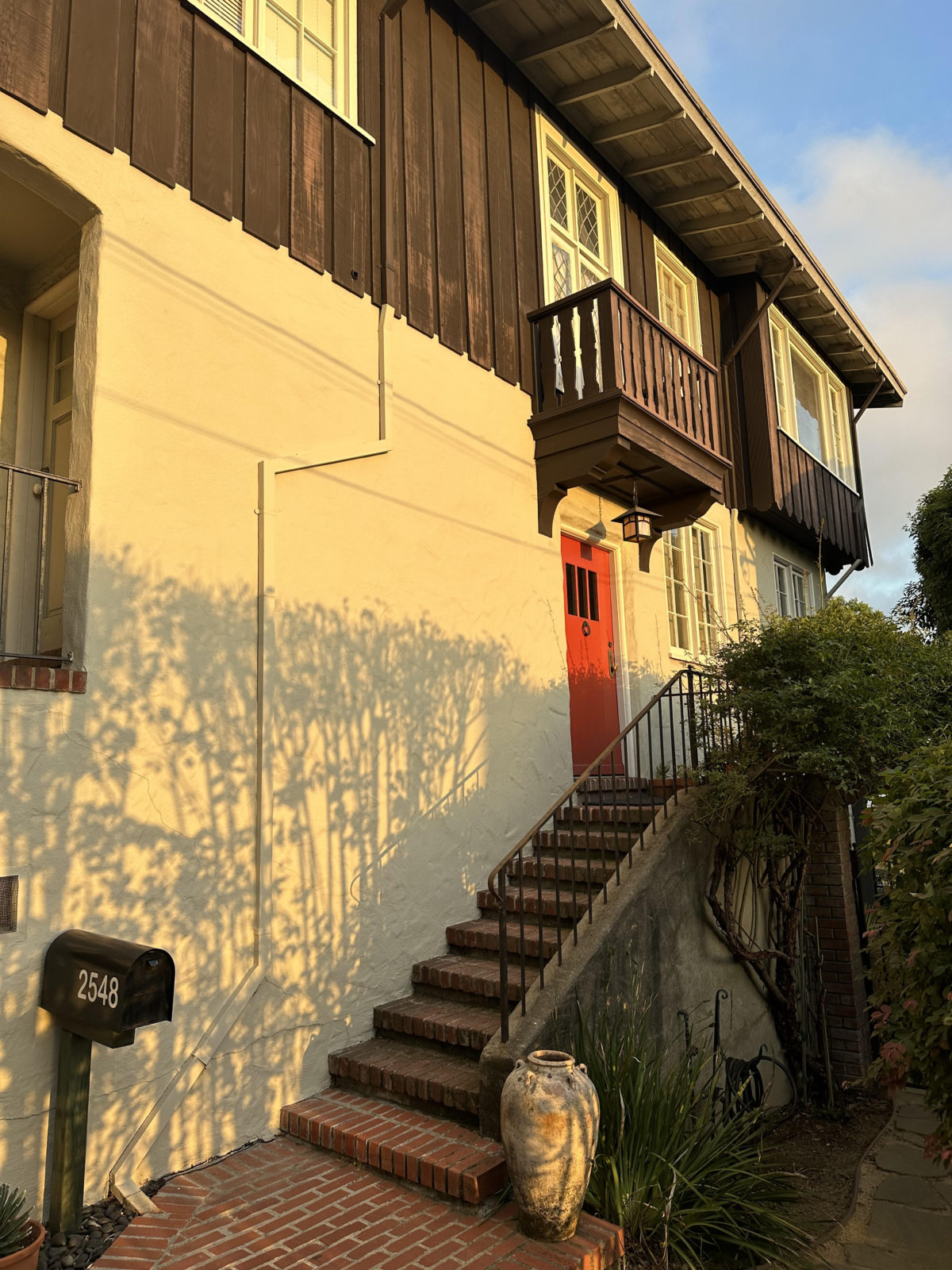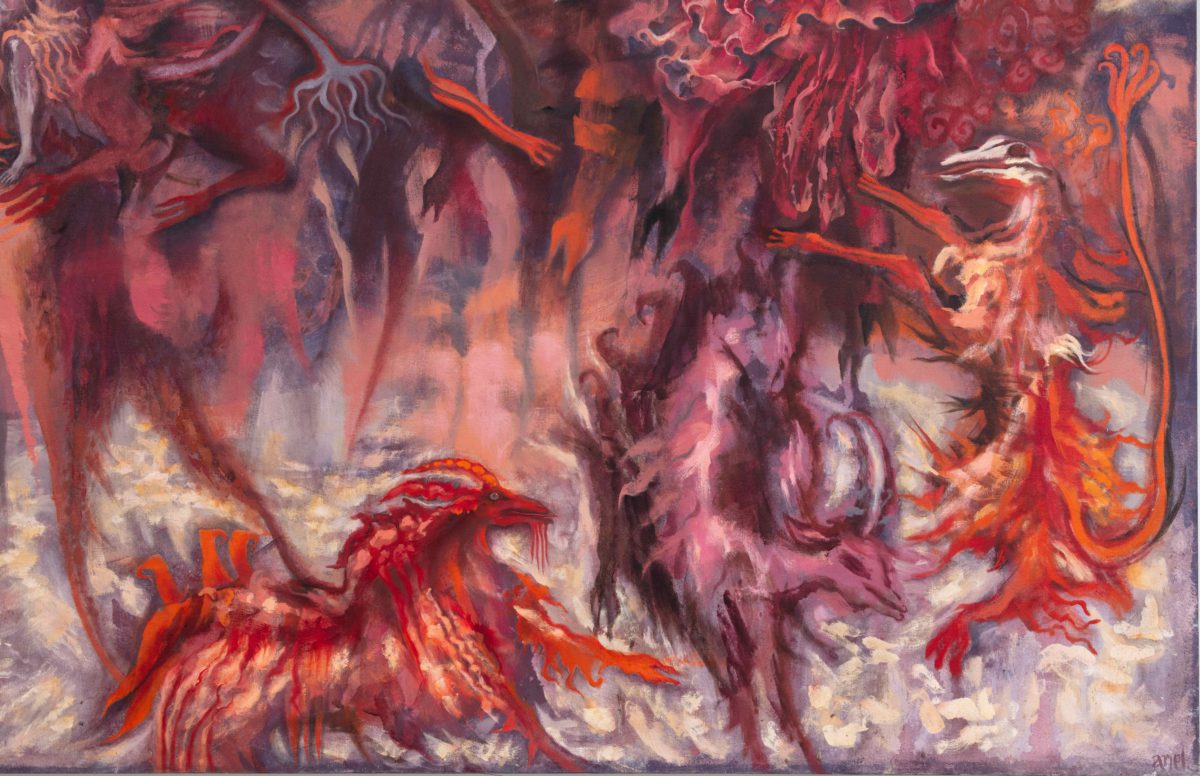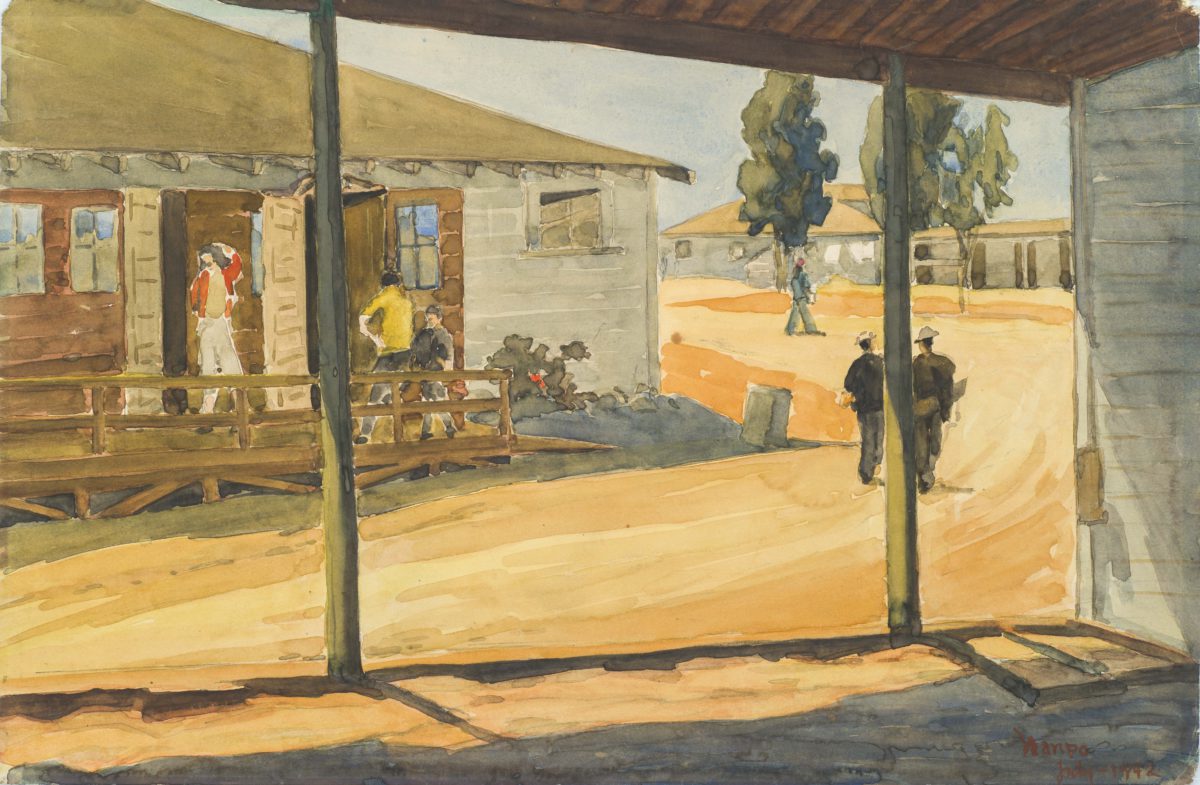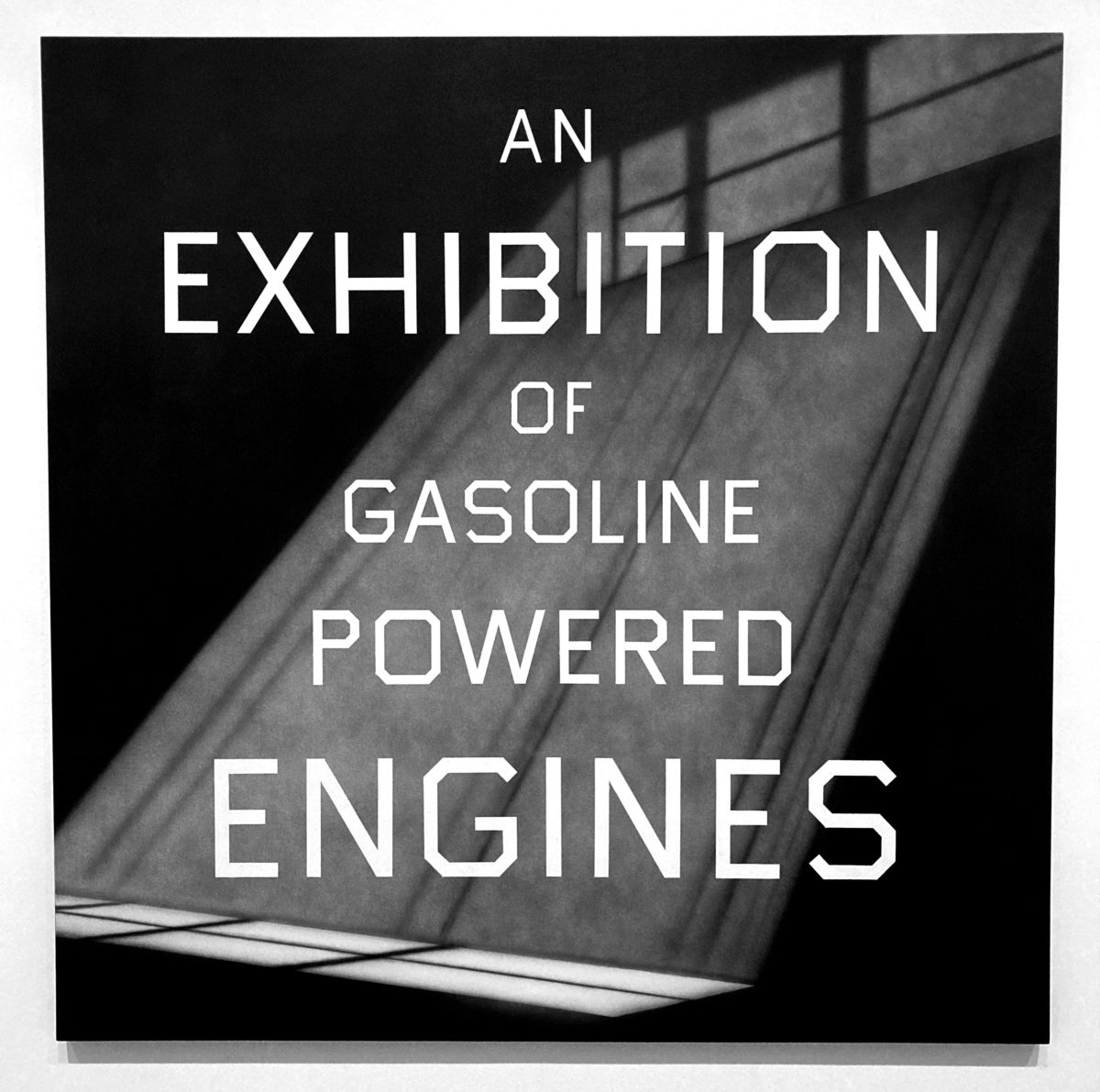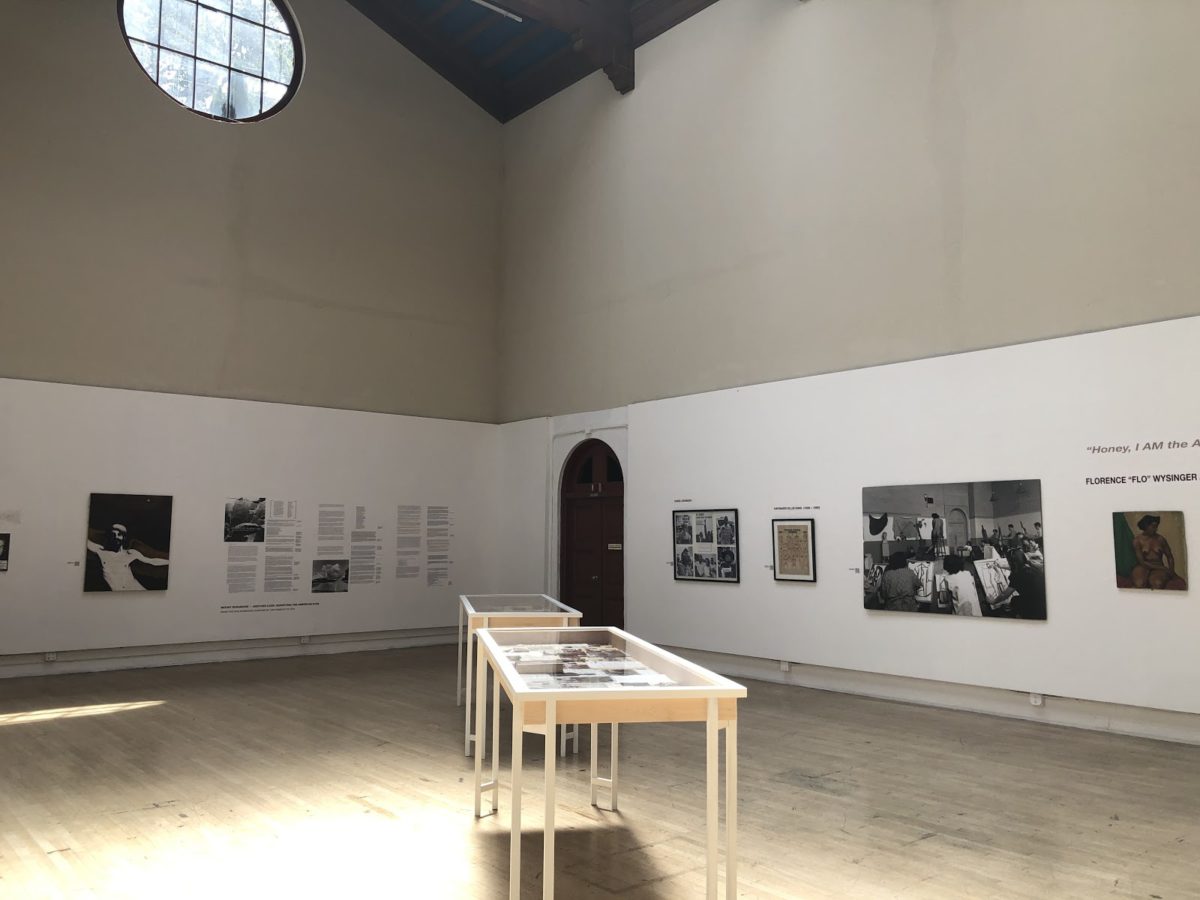
I don’t think I’ve ever stood outside the closed doors on Chestnut Street. I noticed how wide they are, how tall they are, how subtly red they are. Located between multiple iconic San Francisco landmarks—Lombard Street, Fisherman’s Wharf, North Beach, and Coit Tower—I was completely alone standing out front, waiting to be admitted to the San Francisco Art Institute for their 150th anniversary exhibition featuring the work of “disruptive” alumni, faculty, and staff. “A Spirit of Disruption” is an attempt to counter-write the narrative of Bay Area art history that has largely been white and male, by featuring a vast array of artists that have attended SFAI over its history.
The exhibition begins in the Diego Rivera Gallery, a San Francisco treasure, featuring the mural The Making of a Fresco Showing the Building of a City, which equates art-making to industrial work, evocative of Rivera’s politics. The mural is not a part of the exhibition, but is always a special treat to see. This first room contains more historical works, such as Henry Yoshitaka Kiyama’s comics about the racism experienced by Japanese immigrants in San Francisco in the early twentieth century, David Johnson’s black and white photographs of the March on Washington in 1963, and an array of paintings and photographs by and of Florence ‘Flo’ Wysinger Allen, an “esteemed artist’s model” across the Bay Area, and artist in her own right.
I found the two vitrines in the center of the gallery, sunlight careening and reflecting off of them, to contain some of the most intriguing bits of archival history, especially some unexplained images featuring a deep-sea diver and a scantily-clad woman, waves breaking on the shore behind them. I’m caught still thinking about those images. Under examination, this careful selection of SFAI’s archive—a smattering of newspaper clippings, letters to and from Jeff Gunderson, exhibition pamphlets and publications, and a literal time capsule—reveals a secret and private world, usually unseen by the average outsider, like myself. Delving into the archive in this way is like overhearing a stranger’s conversation, missing the inside jokes and references but still being able to grasp the sentiments.
Down the hallway, in the McBean Gallery, the exhibition switches from 20th to mostly 21st century work, featuring pieces from my personal favorites Mildred Howard, Jay DeFeo, and Ana Teresa Fernandez, as well as a new favorite, M Lamar. Upstairs, the exhibition concludes with a three-channel video installation, “Media in the Round,” featuring over two hundred multimedia artists. The tripartite format allows for multiple viewing at once, a buffet for the eyes and ears. Personally, this was what I came to see and spent most of my time on; SFAI has such a rich history of media art that has long inspired my own research.
What I know of the video and media history is the long-standing narrative, and I was hungry to learn more about the diversity of the past and present. The exhibition delivers exactly that; however, the presentation of this moving image media is so consuming that it is practically impossible to take it all in. I focused my attention as best I could on the visuals on the far left, which projected a documentary-style work featuring George and Mike Kuchar, onto a large, curved screen. As for rest—primarily shorter, experimental videos—I can’t even say which ones I watched in particular, or preferred, for that matter. They were mostly records of performance with no credits or title screens.
After my visit, I tried consulting the exhibition website, which provides in-depth information about all of the 2D works and sculptures, but found nothing more than a list of the media-in-the-round’s participating artists. Perusing the archival exhibition left me with the continuing feeling that I was an eavesdropper, hoping to be let in on the conversation.
A Spirit of Disruption
San Francisco Art Institute
Walter and McBean Galleries
Diego Rivera Gallery
800 Chestnut Street
March 19 — July 3, 2021

